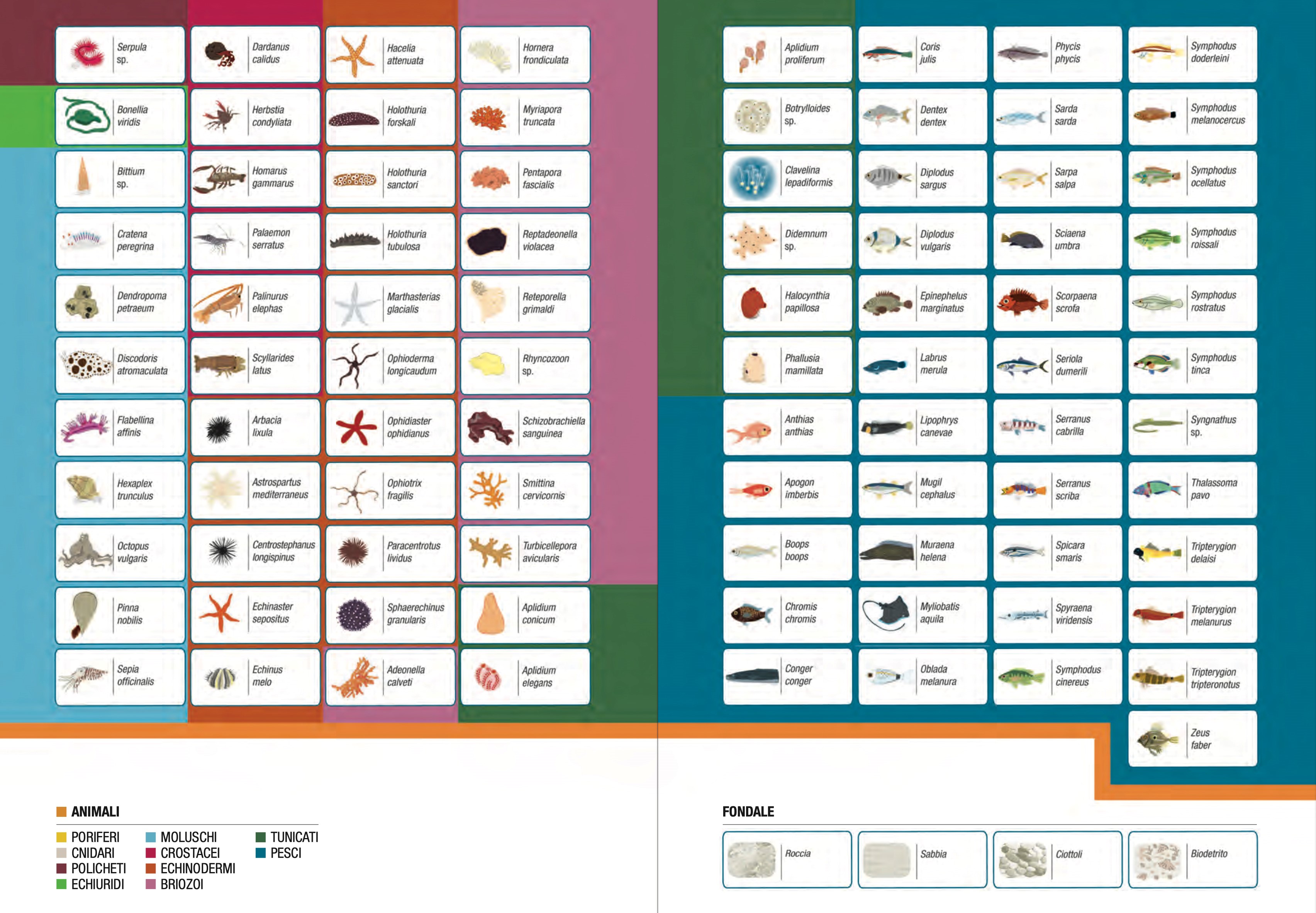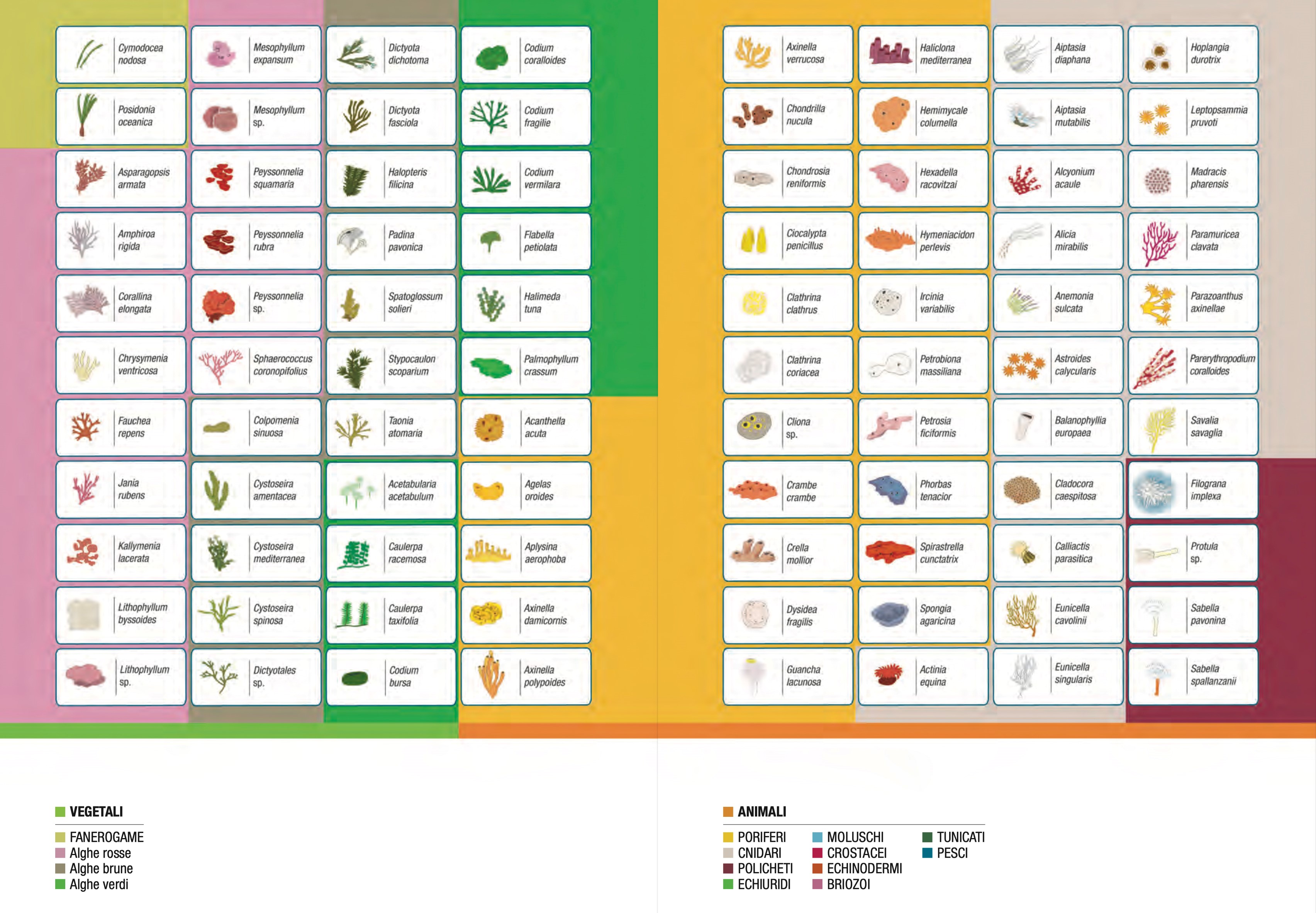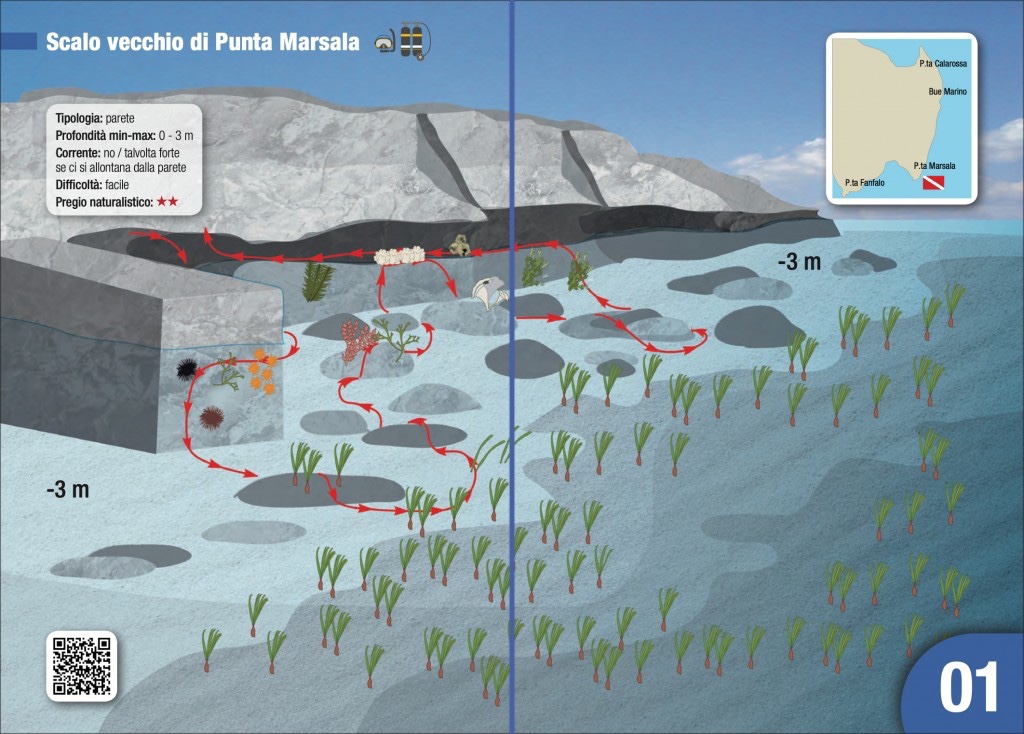Site 1 - Scalo Vecchio di Punta Marsala
On the eastern side of the island of Favignana, with access to the sea at the concrete slipway that in the past was a landing place for boats, it is possible to make snorkelling trips to appreciate, even in a few metres of depth, a great variety of underwater environments. Observing the submerged part of the concrete pier (not shown in the drawing) from the surface of the water, photophilic algal populations (Dictyotales spp.) follow one after the other, shading the substrate and favouring the carpet colonisation of the orange madrepore Astroides calycularis. Deeper down, algae dominate again, predominantly seaweed (Asparagopsis armata), balloon seaweed (Colpomenia sinuosa), Padina pavonica and, down to the base of the jetty, the brown seaweed Stypocaulon scoparium. In the cracks, the urchins Paracentrotus lividus and Arbacia lixula find shelter. In the area in front of the reef, shown in the drawing, one can see that rising up from the sandy seabed about 3 m towards the open sea one can see islands of Posidonia oceanica and landslide boulders covered with photophilic algae around which swim the mullet (Mugil cephalus), the seabream (Oblada melanura), the salpa (Sarpa salpa) and the needlefish Syngnathus sp. Along the submerged reef among the algae, one can recognise the anemone Anemonia viridis, the solitary madrepore Balanophyllia europaea and in the holes the blenny (Lipophris canevae). In the first metre depth the bright green algae Caulerpa racemosa and C. taxifolia precede the orange carpets of Astroides calycularis. At the surface, the fronds of the brown algae (Cystoseira mediterranea, C. amentacea) sway with the movement of the wave and hide specimens of the sea tomato (Actinia equina). Of particular biological and naturalistic interest is the presence of the mollusc Dendropoma petraeum, which with its shell and thanks to the presence of the coralline algae Lithophyllum byssoides concretises the reef and defines the base of the surfaced groove, a concavity of the rock due to the erosive action of the wave motion.
Legenda:


-
Information
-
Contacts
